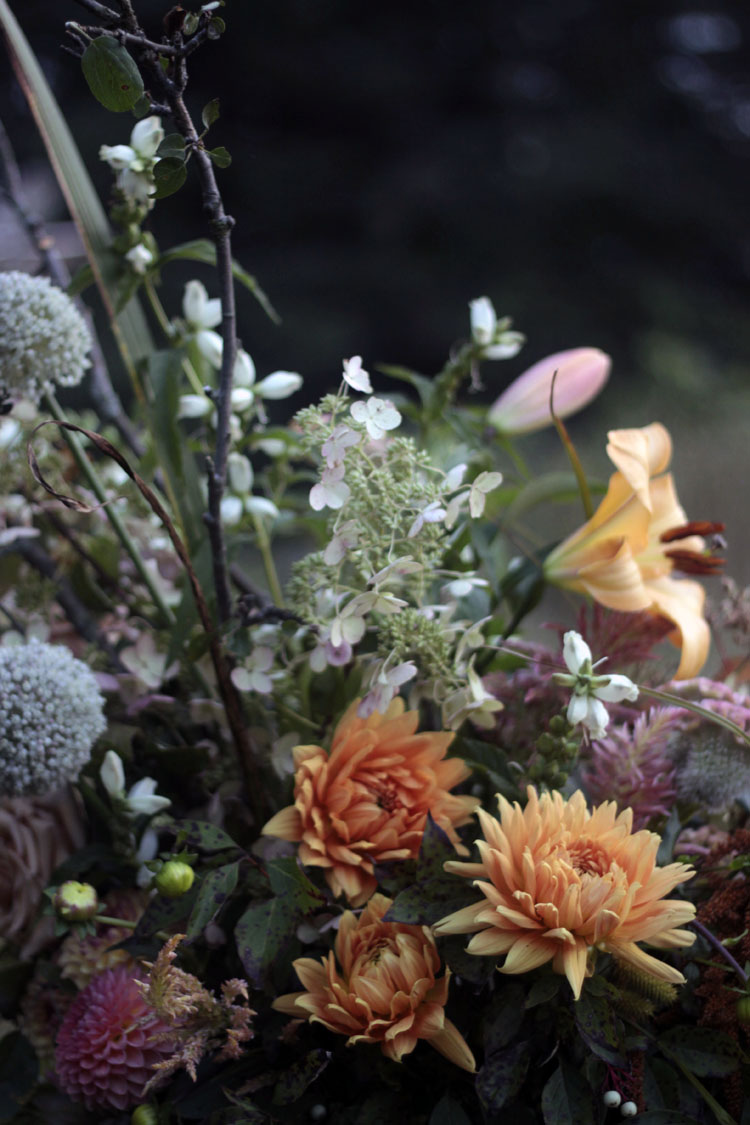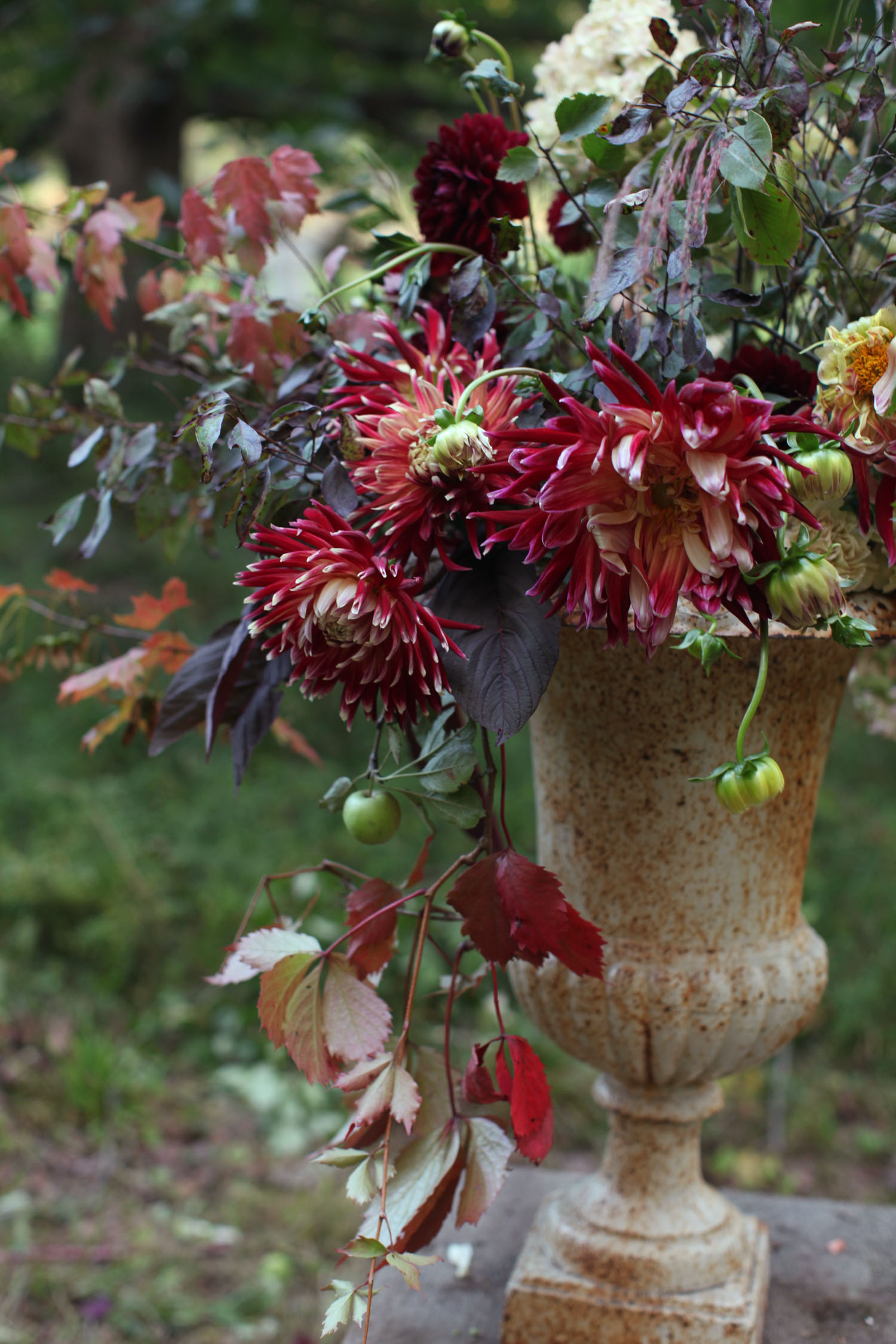Ten students, three of our interns, and a few more animals descended on Worlds End Farm two weeks ago to learn about building large scale arrangements. We started amassing the necessary florals with a trip to River Garden...
We have been ordering flowers at River Garden for years, but have not ever had the opportunity to visit with Bernadette and Walt. Suffice it to say they are a busy couple: they manage 60 acres of flowers. SIX-ZERO. What was supposed to be a quick pick up at the farm ended up being a two-hour-plus, pickup-tuck-surfing cutting session. The celosia fields are especially gorgeous. I would love to do an event with just all different types of celosia....
I'll admit I was envious of the flowers, and of the 4 feet of completely rock free topsoil that they farm on the bank of the catskill creek. To die for! Many thanks to Walt for being so accommodating and talking irrigation with us, Julien for letting us prance around the field pointing at things we wanted him to cut for us (we FORGOT our clippers) and Bernadette for taking the time one night to talk flower farming with us. The place is real deal inspiration.
A lot of people are intimidated by the scale of building large pieces; this class was designed to demystify the process and let students have several hours to practice building.
One of the important things we emphasized in this class is how similar large arrangements are to smaller ones. It's all about scaling up; bigger flowers, bigger pieces of foliage, and more of both.
Just as if you were makeing a smaller compote sized arrangement, you want to start a giant urn off with your larger, more structural materials. We were cutting apple branches, wild dogwood, viburnum, oak and wild grapevine. These large pieces formed the foundation in the urns, or the first rough outline of a shape.
When you build the foundation of the arrangement, it's smart to leave some holes, or some empty pockets: room for some of your face flowers. It's also a good idea to leave some negative space in the top so that you don't end up with a big symmetrical dome of flowers.
Once you've placed your face flowers - or your focal points - you can add the final 'seasoning' -- the accents or wispy gestures. Just remember the scale. A small flower like a chocolate cosmo or a stem of Ixia is not going to have much effect in a 5 foot arrangement...they will get lost. Often the accent flowers for a big urn arrangement are the same flowers that would be the big focal moments in a smaller arrangement. Perhaps a garden rose, a dahlia, a smattering of zinnias...
If for some reason you don't have big sized flowers to use in a big sized arrangement, you can always group lots of smaller ones together to create the big focal points you'll need. Great flower ideas for big arrangements are: delphinium, hydrangea, lilies, fatty roses like 'Secret Garden,' size A or AA Dahlias (sometimes referred to as 'Dinnerplate Dahlias) and hippeastrum.
One last thing to note: You don't need flower foam to construct these big urns! We use chicken wire. Ball it up, jam it in your urn and then be sure to use some strong waterproof tape to secure it - tape right over the urn in a big X. That way the chicken wire cage won't tip out as you're working on the composition.
Last tip; if you have a short stem you want to place high in the arrangement where it won't touch water, you can tube it (put it in one of those urine-sample-looking tubes that come on the ends of cut orchids, or are available at florist supply stores) and then finagle in to sit in the branches. You can also tape the end of the tube to a strong stem - just make sure to cover your tracks so you don't see the tube.
Here's pictures of the masterpieces:
So many thank you's to our incredible intern helpers Mikey (who took a lot of these gorgeous photos), Evelyn, and Reuben. And thanks to Susan, my mother who is our exclusive caterer here at the farm. Such a good weekend.






























